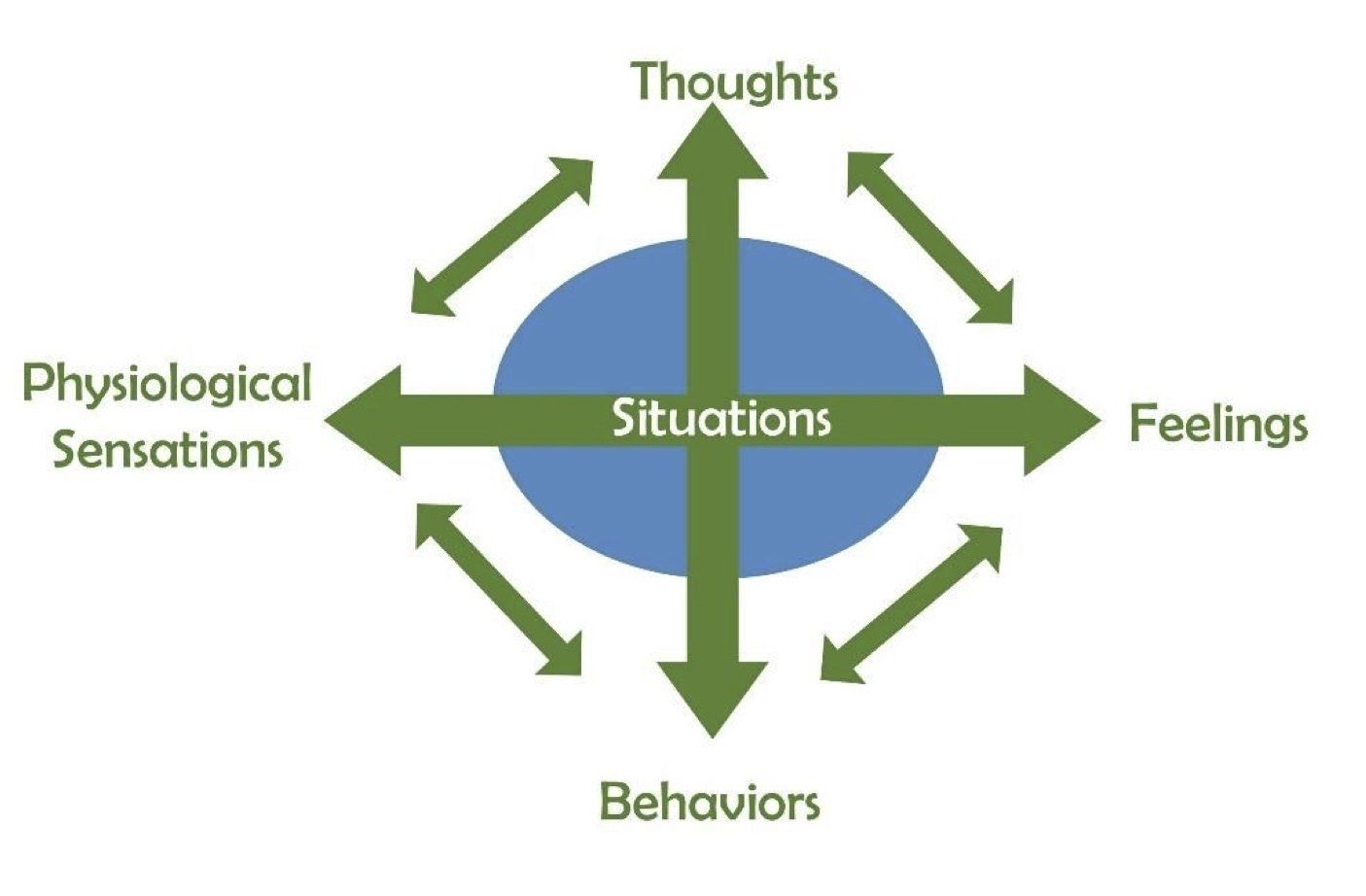Cognitive Model
The Cognitive Model
To understand Cognitive Behavioral Therapy it is first important to understand the connection
between situations, thoughts, feelings, behaviors and body responses. Wanting to see changes in these four areas is the reason that people seek out help.
We all live in a world where situations happen all the time. We are constantly in a situation. Situations can be positive, negative or neutral.
Whenever a situation happens we experience it in 4 different ways: we have thoughts, feelings, behaviors and body responses or physiological sensations.
Body responses are physiological experiences such as an increased heart rate, shaking, tenseness in our muscles and sweating.
To understand how to make changes in these four areas we must understand a few basic principles.
All of these areas are connected to each other and impact each other. If we change one of these 4 areas, all the others change as well.

We have some control over two of these areas: our behaviors and our thoughts.
If we take advantage of some of the control we have and change our behaviors and our thoughts we have the opportunity to also change our feelings and our physiological body responses because all of these areas are connected.
Our thoughts have a majority of the control over everything else (feelings, actions, and body responses).
Therefore, if we think something and we believe that it might be true (even if we are wrong) it will impact how we feel, what we do and the way our body responds.
JUST BECAUSE YOU THINK SOMETHING DOES NOT MEAN THAT IT IS TRUE.
Consider how these three beliefs would impact feelings, behaviors and body responses and then click on the links to see compare your ideas with ours. Remember there are no right or wrong answers because we all have different thoughts in different situations.
- Believing that the dog you see at the park will bite you. see example
- Believing that your friends are going to throw you a surprise party. see example
- Believing that the world is going to end in 5 minutes. see example
Because of the way our thoughts can impact feelings, behaviors and physiological responses and because of the fact that not all thoughts are true, the first step in addressing distress is to start to develop an awareness of the thoughts that are popping into your mind when you feel distressed. A therapist at the Cognitive Behavioral Therapy Center can help you take the first steps toward learning these skills.
A real life example

If you are in a situation where you just got stung by a bee for the first time in your life you might have a thought about people who die from allergic reactions and this possibly happening to you. This thought would not be calming but likely lead to feelings of fear and anxiety. These thoughts and feelings may lead you to scream out for help. You may also experience some physiological sensations such as tightness in your chest and increased heart rate. These physiological sensations may lead to other thoughts about these sensations being a sign of anaphylaxis shock. This new thought may increase your fear and lead to more intense physiological sensations such as lightheadedness. This may lead to you calling 911 or having someone drive you to the ER.
Conversely, a person can be in the same situation of getting stung by a bee for the first time in their life and have a different thought about how it didn’t hurt as much as they always thought a bee sting would hurt. This could lead to a feeling of surprise or curiosity which might lead to the person putting a cold compress on the bee sting and then continuing what they were doing prior to the bee sting. This person may not notice any physiological changes.
Contact Us
9890 Clayton Rd, Suite 100
St. Louis, MO 63124
Annex
9904 Clayton Road, Suite 135
St. Louis, MO 63124
